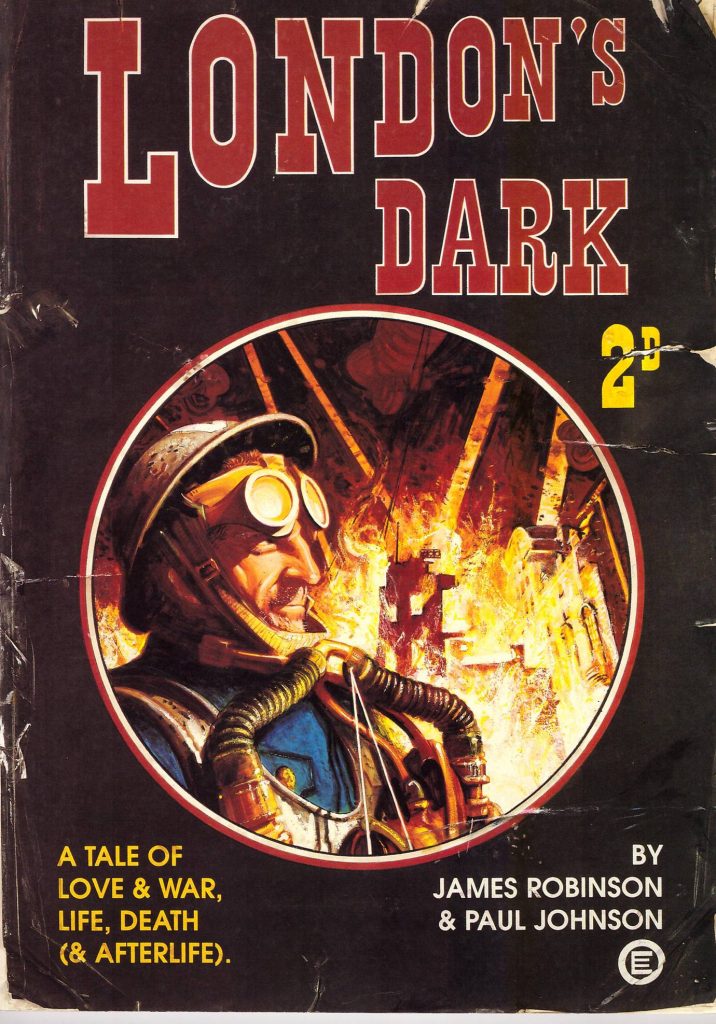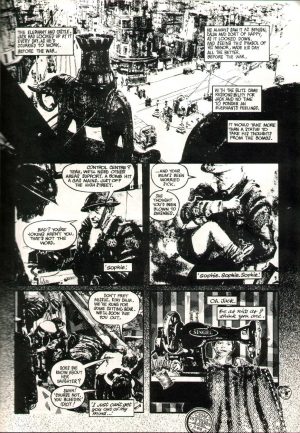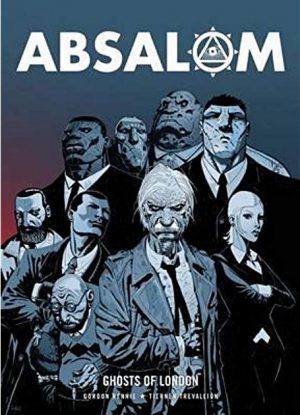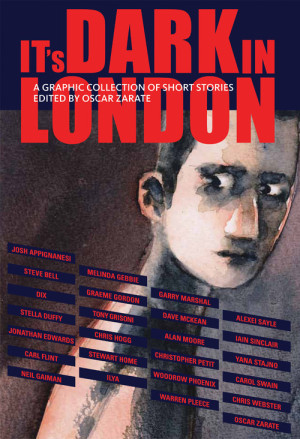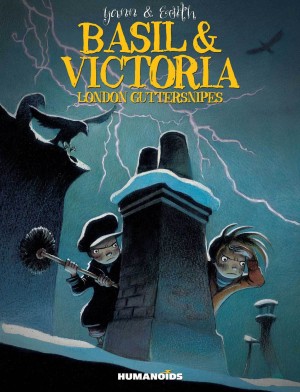Review by Frank Plowright
London’s Dark is James Robinson’s first published graphic novel, and while not seen as such in 1989, a clear pointer to the varied and interesting writer he’d become. When offered their first graphic novel, even for a small independent publisher, how many writers would settle on the experiences of Londoners during World War II’s Blitz as their subject matter? Even today when the selection of graphic novels is far broader? Beyond that, it ticks numerous genre boxes, featuring crime, the supernatural, romance, history and social observation. It’s as if Robinson is determined to pour everything he wants to tell into what could be his only chance to tell it.
It’s a work to be proud of both for Robinson and artist Paul Johnson, but is nonetheless the product of ambitious, yet inexperienced novices, a raw enthusiasm taking London’s Dark a long way. It begins with a murder in 1940, the victim believed to be just another casualty of German bombing raids until his mother consults a spiritualist. Sophie Heath is genuine and has a genuine talent despite being ridiculed by sceptics, and word spreads of her revelations, eventually reaching the killer.
Johnson’s panels are a succession of grainy individual illustrations, many connected only by the period and the narration. He evokes the era through style, fashion and uniforms, as if we’re seeing random snapshots that have slightly decayed over the years, all admirably created, yet never coming to grips with the strong emotional content that’s the core of London’s Dark.
Combining romance with crime echoes 1940s black and white movies, nostalgia a frequent touchstone in Robinson’s writing, and other elements common to his later work are plentiful. There’s a desire to build complete people with multiple facets, an attention to detail among minor characters such as the overweight policeman, and embedding people in a location, making that as much a character as any cast member. Here, though, he’s not quite worked out how to incorporate everything he wants without clumsy intrusions. The simultaneous dialogue between two people accompanied by their individual thoughts is an example, and two pages of text to supply a full, yet unnecessary background is another.
Because graphic novels have grown to embrace as many topics as prose novels London’s Dark no longer stands out as it once did, despite a cover designed to resemble something rescued from wartime bombing. Even on publication there’s a sense of David Lloyd’s introduction straining to be positive, admiring the ambition and offering encouragement while being aware of the limitations. It’s still readable, but better was to come from both creators.
